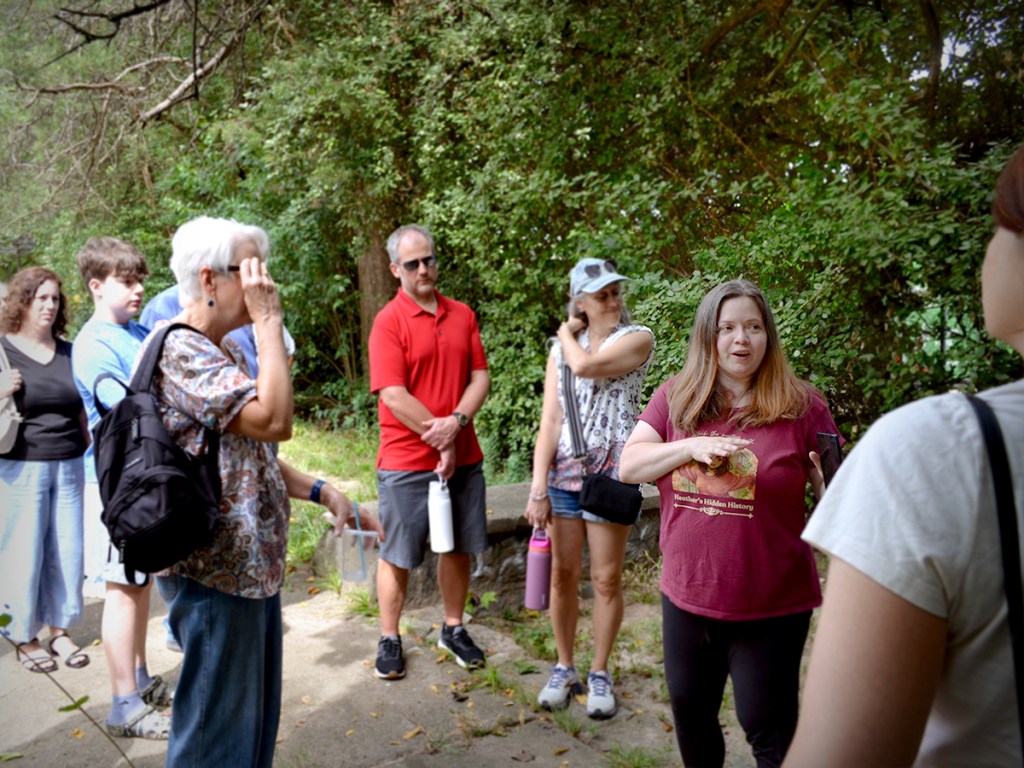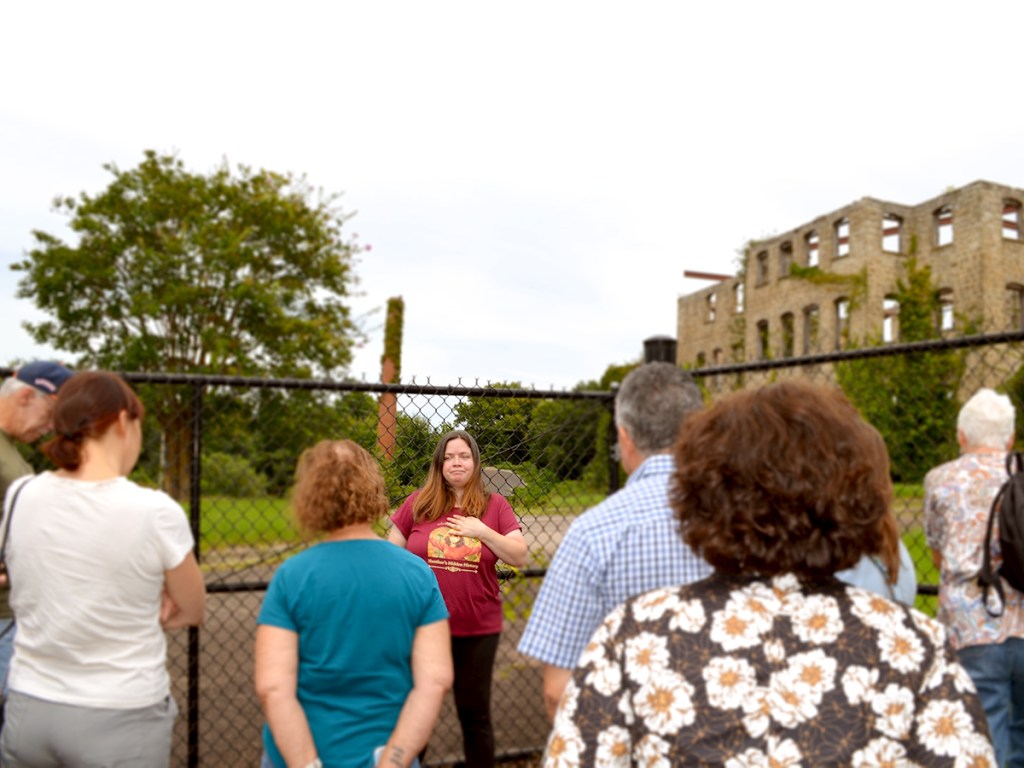Heather Leah likes to play a game where she picks a spot in Raleigh and asks herself what stood there 50, 100, or 200 years ago.
Consider State Parking Lot 20 on the corner of Blount and Jones Streets across from the governor’s mansion. A century ago, Meredith College students studied there in a stately Queen Anne–style mansion bedecked with turrets, gables, and wraparound porches. After Meredith relocated to Hillsborough Street, the building was converted into a hotel, then an office building, then demolished in 1967.
Venture down an overgrown footpath off Peace Street and discover a hidden riverbed flanked by stone walls. It’s one of the last vestiges of the Devereux Meadow baseball stadium, where various minor league baseball teams played between 1945 and 1971. The river was routed underground in the 1930s to make room for the ballpark. Today, it’s been paved over in most places.
In the spot where the North Raleigh Hilton stands, colonial North Carolinians gathered 200 years ago in Isaac Hunter’s Tavern—an establishment so popular among politicians of the day that the General Assembly passed a resolution in the late 1700s requiring the new state capitol be located within 10 miles of it.
The tavern has long since been demolished. But it hasn’t been forgotten—at least, not by Leah. A local historian, author, and tour guide, she specializes in documenting and sharing Raleigh’s hidden histories and forgotten landmarks.
“I’m trying to find these places that you maybe walk past or over top of, and you don’t even realize that something important happened there,” she says. “I’m trying to talk to people who remember those times and document their stories.”

A fifth-generation Raleighite, Leah began blogging about local history on a whim in 2012. She liked the idea of writing about her home city but never planned for the blog to become her full-time job.
“My dad built me this website … and he goes, ‘This website is going to be more valuable to your career than your college degree,’” Leah remembers. “And I was like, ‘No way, absolutely not.’ But I did it to spend time with him.”
One of her first viral posts was about the Village Subway, an abandoned underground mall beneath the Village District and a hub for Raleigh’s punk music scene in the 1970s and ’80s. Leah found few photos of the Village Subway in its heyday, so she gathered oral histories from the people who used to work and play down there.
“That became a crystallizing moment where I saw how history can create community,” she says. “People who hadn’t seen their friends in 50 years were finding each other in my comment section. Bands that hadn’t played together since the ’70s reunited.”
After Leah’s blog took off, news stations hired her to produce hidden history segments and the Great Raleigh Trolley tapped her as a tour guide. She was invited to speak at community events and appointed to the Raleigh Historic Development Commission. As her dad predicted, Leah made a career as a local historian and recently wrote a book about North Carolina’s ghost towns and lost communities, set to publish in January.
On her blog, she’s written about how thousands of people freed from slavery moved into freedmen’s villages around Raleigh after the Civil War. Most of these villages were wiped off the map, but Method and Oberlin Village remain.
“Those villages were often forced to be in low-lying areas prone to flooding, or down by the railroad tracks, or places where you’re gonna have trouble building generational wealth,” Leah explains. “If you look at the landscape of Raleigh today, a lot of the places where those freedmen’s villages were struggling are places now where the community doesn’t have as much money.”
“This is why history is so important,” she adds. “It’s not just about the nostalgia …. It’s also understanding why your city looks the way it does, and why some of the struggles that exist today exist.”

Raleigh’s fast-growing population has created a debate among residents about how to balance historic preservation with new development. As a historian and longtime resident, Leah has a nuanced perspective.
“I do want to see Raleigh grow. I’m not totally scared of development. I want there to be growth and change,” she says. “But it breaks my heart when they just tear down an extremely culturally interesting or significant place.”
Leah advocates for “adaptive reuse,” or renovating historic structures for new purposes. Raleigh Iron Works, Durham’s American Tobacco Campus, and Rocky Mount Mills are good examples.
“Those places are all the cooler because of adaptive reuse,” she says. “Developers need to think in terms of using what’s already there, and I think they’ll be celebrated because of it.”
She also knows some buildings will inevitably be lost.
“At least document it,” Leah says. “Allow a team of professionals to go in and photograph it for historic reference. Let’s make sure that if we’re gonna tear a place down or close it permanently, we make sure it’s not forgotten.”
Chloe Courtney Bohl is a Report for America corps member. Follow her on Bluesky or reach her at [email protected]. Comment on this story at [email protected].
